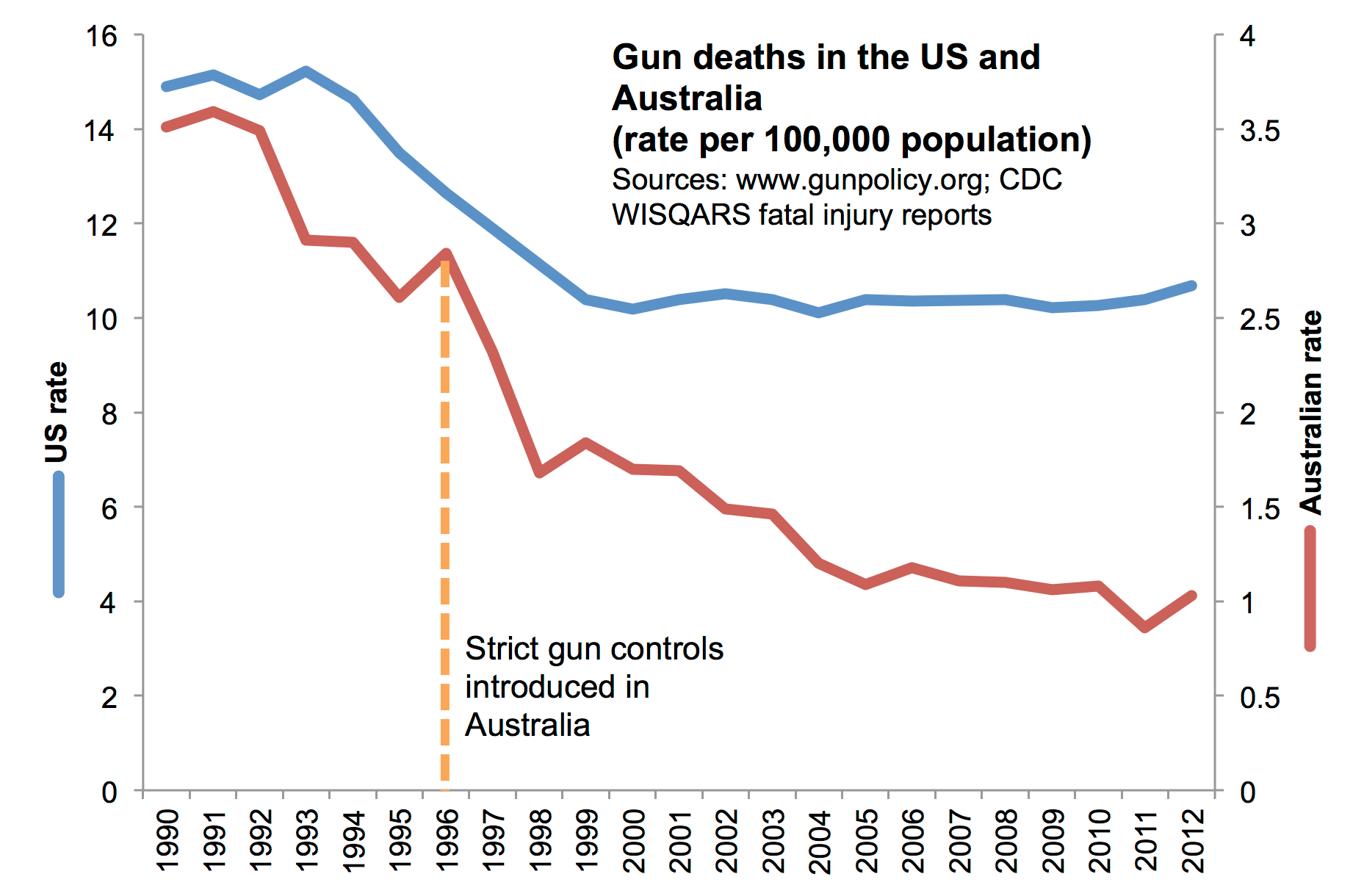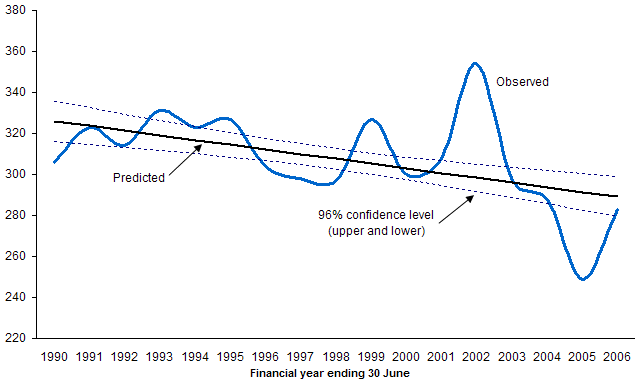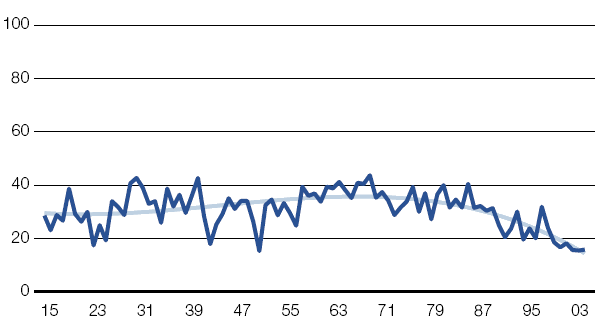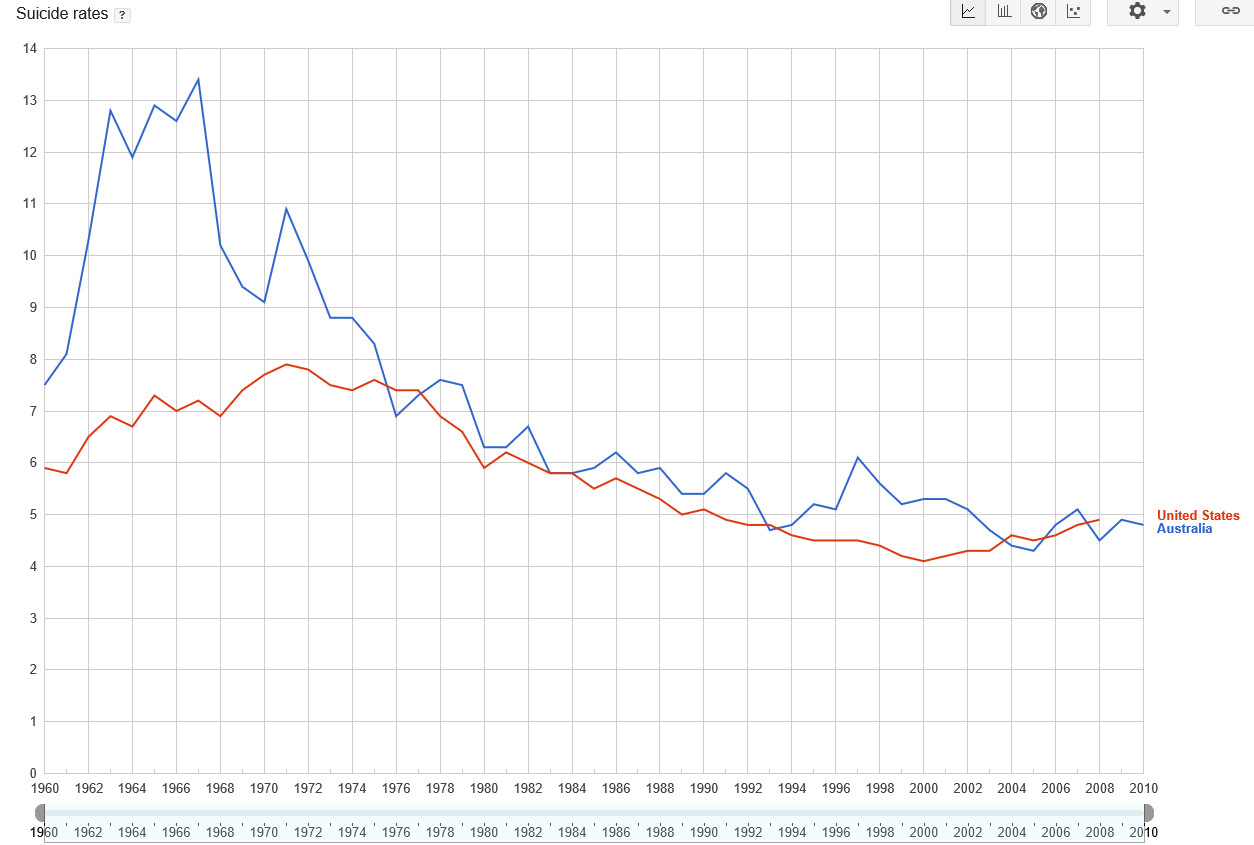Graph of the day: Guns in Australia
Gun control activists like talking about "firearms homicides" and "gun-related deaths", purposefully singling out guns when
they talk about violence. The conclusion they want the audience to reach is - guns are bad, let's get rid of them.
Of course, the intellectually honest way to look at the data is to consider ALL violence - guns and otherwise - before and
after the gun control is introduced, and see whether the measures had an effect on the total rates, or just shifted the tools of
violence from guns to something else.
For example, the most important result often cited in support of the
Federal Assault Weapons Ban
is that there are fewer "assault weapons" recovered from the crime scenes. So what? The question that really matters is, are
there fewer crime scenes? And the answer is, of course not!
Australia provides an interesting case study in effectiveness of gun control laws. Strict gun controls were introduced in 1996,
followed by extensive buy-back program that all but eliminated certain types of gun ownership in civilian hands in a very short
time period (over 650000 firearms were collected). The result (courtesy
of Wikipedia) was this:

Great success, right? A big drop resulting in saving a lot of lives? Let's ban all guns everywhere? Well, not really. Because what
about rope deaths (vast majority of gun-related deaths are actually suicides)? Or knife-related deaths?
One word - oops! Here are the two graphs from Autralian Institute of Criminology


Note: the graphs above are absolute numbers, so the rate of homicides drops slightly faster because of the population growth - but not materially so.
As you can see, not much difference, before or after the gun ban - just a general reduction very much in line with the rest of the
western world (and quite a bit below the US in the same period where it dropped roughly by 1/3 between early 1990s an 2007, and then dropped 25% more
by 2013 -- source).
Why is that? Because, well, though number of gun homicides decreased, so did the percentage of the homicides performed with guns.

This metric trended down anyway, to now being only around 10%, but there was an acute drop roughly around 1997 when firearms were yanked off
the market.
Now, what about suicides?
Here
is the data for this.

As you can see, no visible effect from the gun ban, either. The rates dropped a bit after 1997, but that's because it had a local peak in 1997. Overall,
suicides in US (highest in the world gun ownership rates) and Australia (now low gun ownership rates) remained in statistical parity, before and after
the ban.
The lesson we should learn from all this? Faced with a few high profile mass shootings, Australia focused on eliminating guns rather than
getting to the root causes of violence. They successfully eliminated guns, but it did nothing to the levels of violence in the country.
Let us not make the same mistake here!